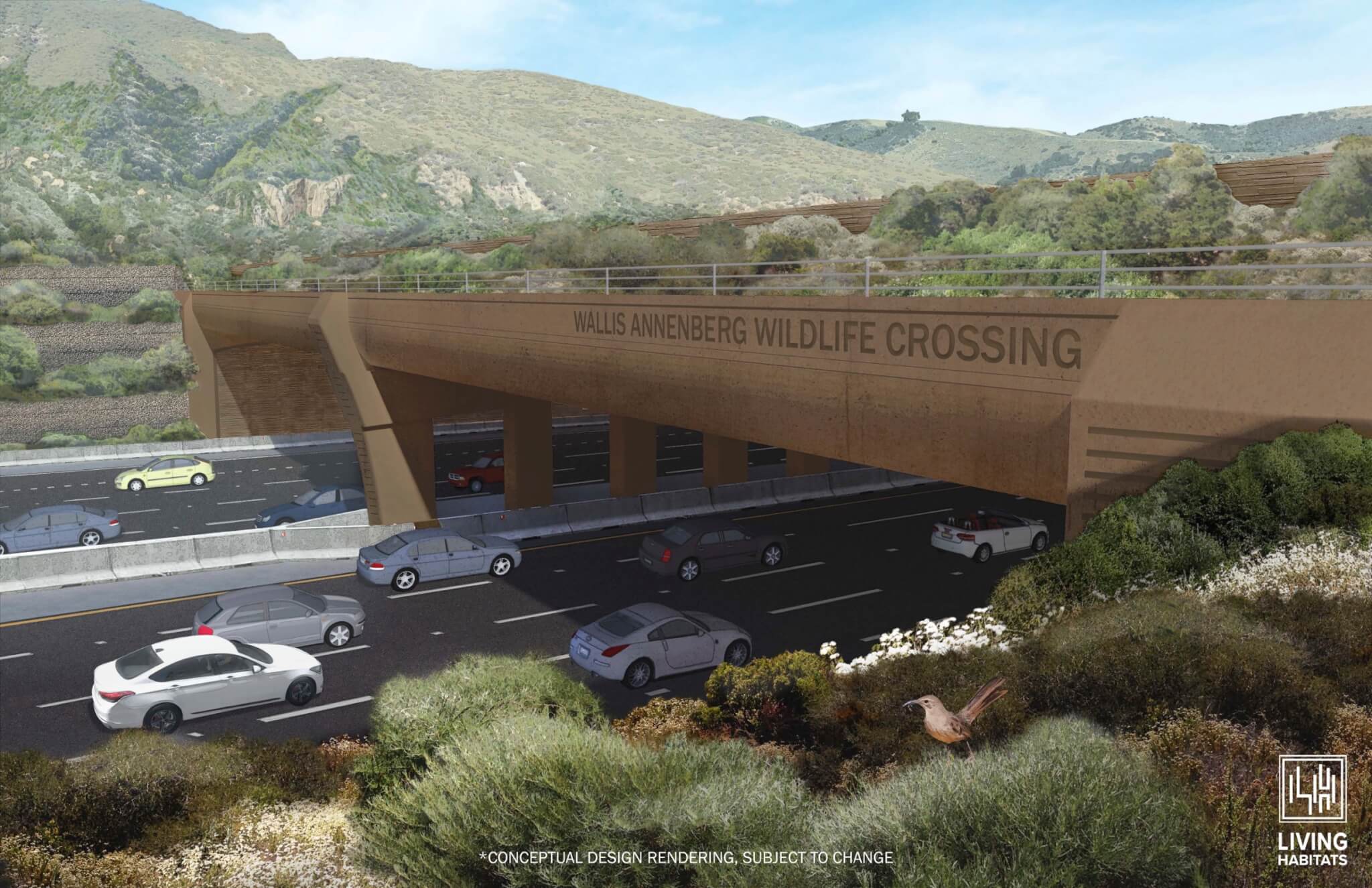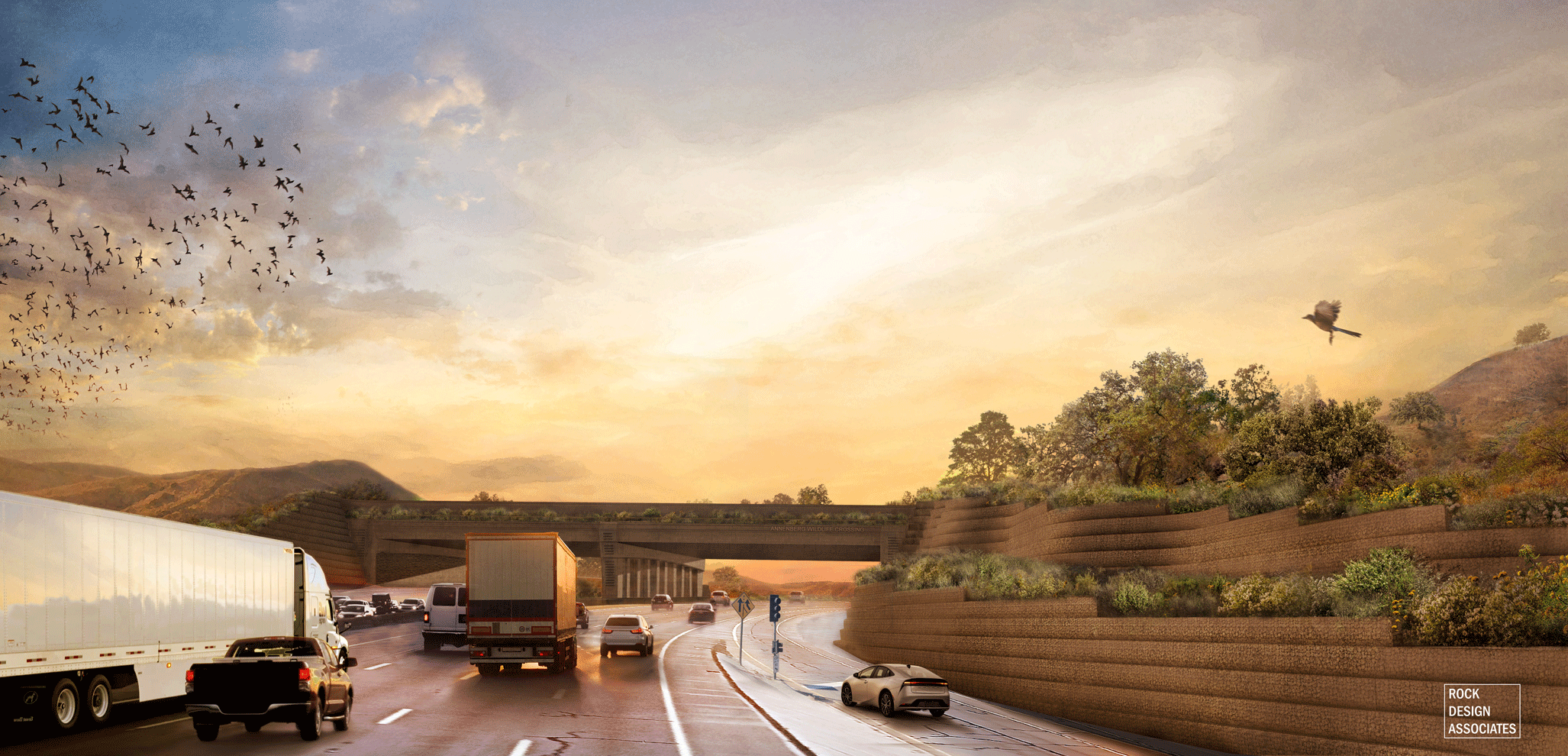Route 101 in Agoura Hills, California traffics over thousands of cars each year stretching from Olympia, Washington to southern Los Angeles. The ten-lane freeway provides roadway for small energy-saving cars, large freight trucks, and the occasional mountain lion that impedes the flow of traffic. The Santa Monica mountains adjacent to the freeway serve as a habitat for a population of around 100 mountain lions. Over the years consistent run-ins with mountain lion on the roadway led state authorities to deploy a solution: a wildlife crossing.
The 210-foot-long expanse will span over the roadway continuing the grassy and arebol landscape found along the roadside. The Willis Annenberg Wildlife Crossing was first announced and reported on by AN in 2019. This week, on April 17, the first horizontal girder for the crossing went up at 2:30 a.m. And vehicular traffic can expect road closures on southbound lanes in the nighttime hours as the rest of the remaining 81 girders are installed.

Led by Robert Rock of Chicago-based design firm Living Habitats and now Rock Design Associates, the is set to be the biggest wildlife crossing in the world. Other project partners include: Caltrans, the Mountains Recreation and Conservation Authority, the National Park Service, the National Wildlife Federation, and the Resource Conservation District of the Santa Monica Mountains.
Willis Annenberg Wildlife Crossing follows precedent, such as the Trans-Canada Highway in Canada’s Banff National Park and a crossing above I-80 in Nevada. The need for the highway cap for animals and wildlife is imperative for a threatened species such as mountain lions. Incidents concerning the big cats in recent years have included a 2015 episode, in which a few mountain lions seeking more space to roam crossed the freeway without harm. However, in 2022, a mountain lion was not so lucky and was one of many that year to be struck by a vehicle.
The bridge is set to support the local biodiversity with an additional 12 acres of ecological reconstruction. The girders currently being installed across the freeway are made of reinforced concrete. Each is over 93 feet long and weighs in at just over 126 tons.
Conceptual renderings of the expanse show the monolithic structure faced in an earthen tone so as to blend in with the natural surroundings. The structural element dotted with native vegetation runs also will abut the roadway so as to create more surface area for the wildlife to roam. From the safe distance of the Frank and Joann Randall Overlook patrons can take in the landscape and maybe even spot a mountain or two safely crossing over Route 101.

Wildlife crossings have proven mass success in the past. Though these crossings tend to have a suggested species in mindset, their versatility allows for all wildlife to use and accustom to it for safety. The Willis Annenberg Wildlife Crossing is set to be completed by either end of 2025 or early 2026. Though the mountain lions are an intended concern by preservationists, the bridge will allow for more biodiversity in an overly urbanized setting.

